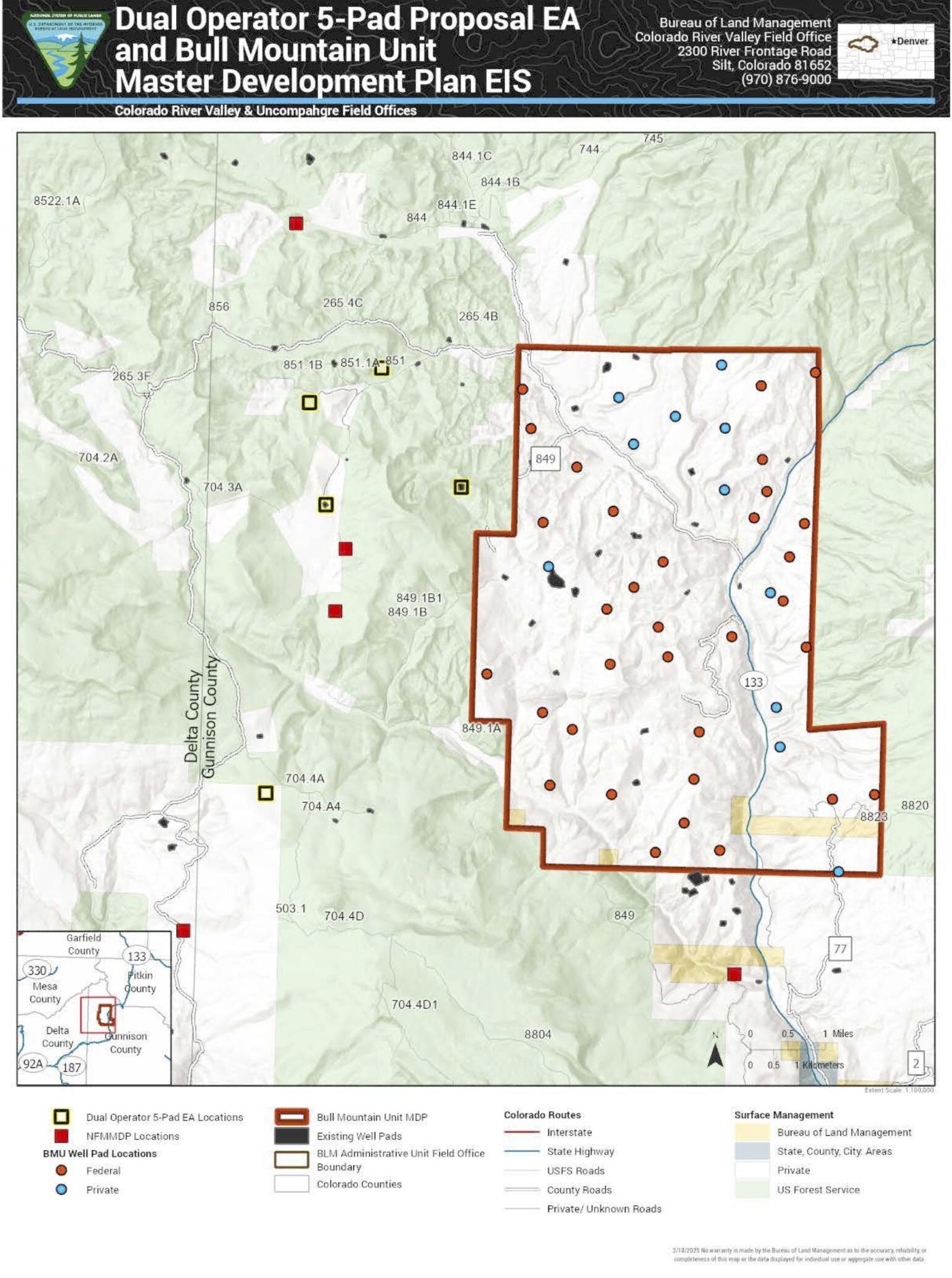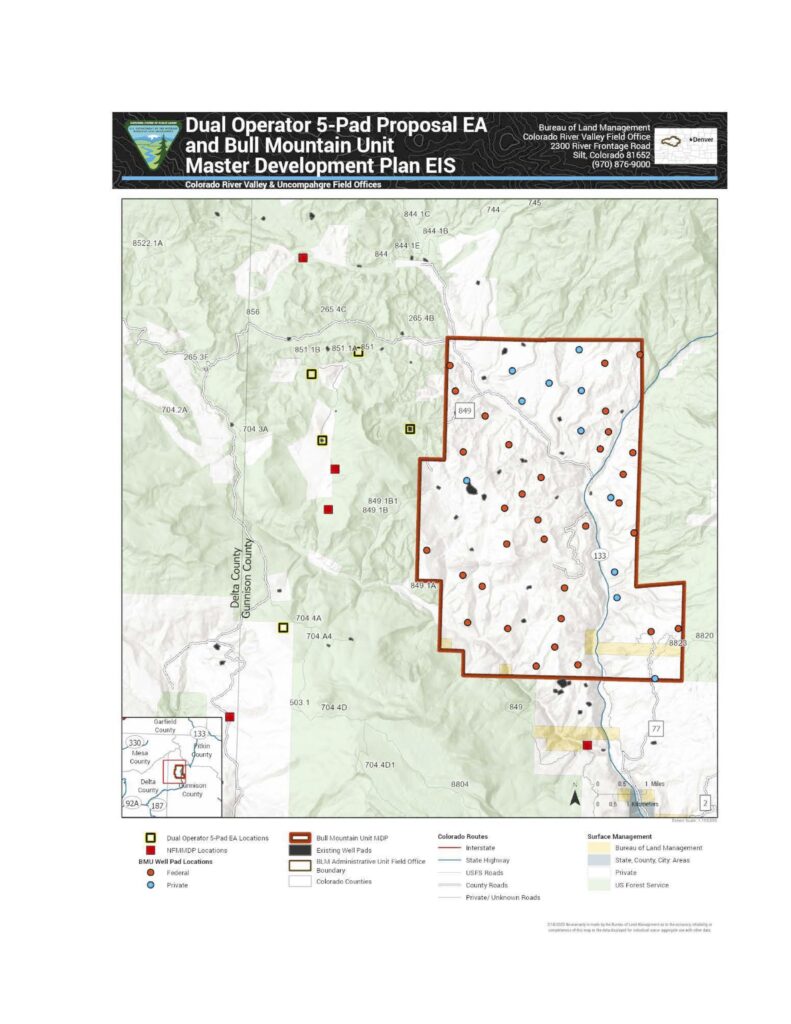
April 14, 2025 Public Comment Deadline! Read on for details on how to submit a comment.

Until Monday, April 14th, the Bureau of Land Management (BLM) has a public comment period open for the Supplemental Environmental Assessment for the Bull Mountain Unit MDP EIS and Dual Operator 5-Pad Proposal EA (Supplemental EA). The final Bull Mountain Master Development Plan was approved back in 2017, and the 25-well 5-Pad Dual Operator Project within the adjacent North Fork Mancos Master Development Plan boundary was approved in 2015.
The Supplemental EA is to further analyze greenhouse gas (GHG) emissions, and cumulative hazardous air pollutant (HAPs) emissions and impacts associated with these projects. The BLM may also consider new information, including Colorado’s Energy and Carbon Management Commission High Priority Habitat Maps which were recently updated for the Southwest Region based on Colorado Parks and Wildlife data.
These projects are located northeast of Paonia in western Gunnison County. Three of the five pad locations proposed for that 5-Pad Project are on National Forest System lands, with the other two on private surface lands. The Bull Mountain Unit involves private surface lands almost entirely, with a small area of BLM surface lands. Projects access a combination of private and federal mineral estate.
With the April 14th Public Comment Deadline coming up the quickest way to submit comments is by clicking Participate Now on the BLM’s project website.
Here are some helpful points to include. Feel free to copy and paste, but customized, unique comments will be the most impactful. For example, you can add your occupation and why limiting air pollution and climate change is important to you.
- The Supplemental EA fails to consider local conditions and impacts. Local warming in Gunnison County, on BLM lands and surrounding forest lands, and in neighboring Delta County is already 1.5 degrees Celsius or 2.7 degrees Fahrenheit, which makes this a climate hotspot approaching a point of irreparable harm.
- The Supplemental EA fails to consider the cumulative impacts of past present and future development including the West Elk coal mine, which is the largest methane emitter in the State, as well as the many abandoned coal mines, oil and gas wells, and low producing wells not subject to Colorado air emissions regulations.
- The Supplemental EA did not consider truck traffic emissions, including the local impacts of truck traffic through Hotchkiss and Paonia. There is no clear estimate of truck trips or their associated air pollutants and greenhouse gas emissions.
- Climate science tells us we should be reducing emissions globally, but the Finding of No Significant Impact dismissed the significance of the fact that up to 4 percent of Colorado’s emissions from federal lands will come from the Bull Mountain Project, 5-Pad Dual Operator plan, and North Fork Mancos Master Development Plan.
- Climate change in our region threatens water resources, wildlife habitat, crops, forest health, road infrastructure, and more. Increasing GHG emissions and hazardous air pollutants, especially locally, further threatens our regional climate, natural resources, and local communities.
- The Supplemental EA does not account for updates to High Priority Habitat Maps recently approved by the Colorado Energy and Carbon Management Commission. Supported by Colorado Parks and Wildlife data, this part of our watershed includes Aquatic Cutthroat Trout Designated Crucial Habitat, Aquatic Native Species Conservation Waters, Elk Severe Winter Range, Elk Winter Concentration Area, Elk Migration Corridor, and Elk Production Area. Other HPH designations may exist within the area including for raptors and mule deer.
- BLM should also consider new information from their recently finalized Resource Management Plan amendment for Big Game Habitat Conservation for Oil and Gas Management in Colorado, and the updated Forest Service Management Plan for the Grand Mesa, Uncompahgre, and Gunnison National Forests.
